Abstract
Hybrid dysgenesis is a syndrome of germ-line aberrations including, e.g., sterility and mutation, found in certain interstrain hybrids of Drosophila melanogaster. Previous studies of sterility have shown that elements responsible for dysgenesis may reside on all major chromosomes, but that their dysgenesis-causing ability is controlled by an unknown extrachromosomal factor. Dysgenic hybrids also give rise to unstable visible mutations thought to be DNA insertions at certain sensitive loci. One such unstable allele at the singed bristle locus, designated snw, was found to mutate at extraordinary rates exceeding 50%. This instability was shown to be under the same extrachromosomal control as hybrid dysgenesis itself. That is, the mutability of snw was reversibly suppressed when placed in the background cytotype known to prevent sterility and other characteristics of hybrid dysgenesis. These results suggest that snw may represent an insertion at the singed locus of a hypothetical gene responsible for hybrid dysgenesis.
Full text
PDF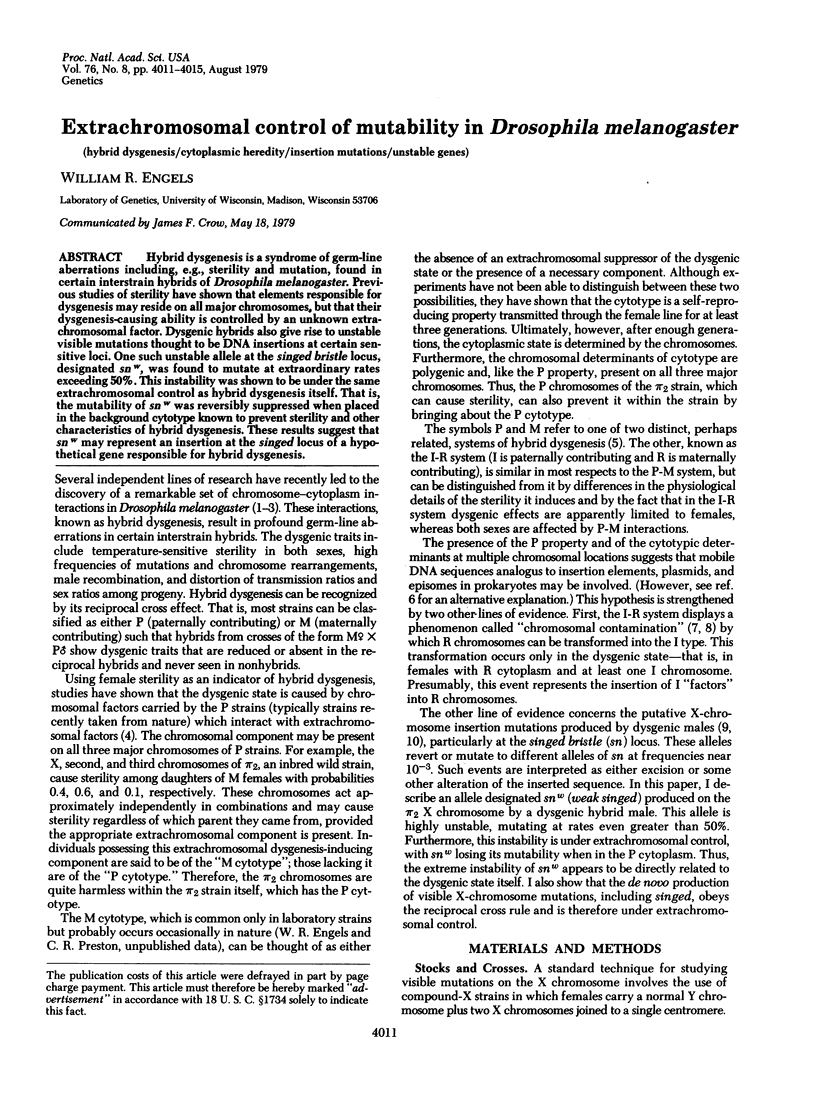
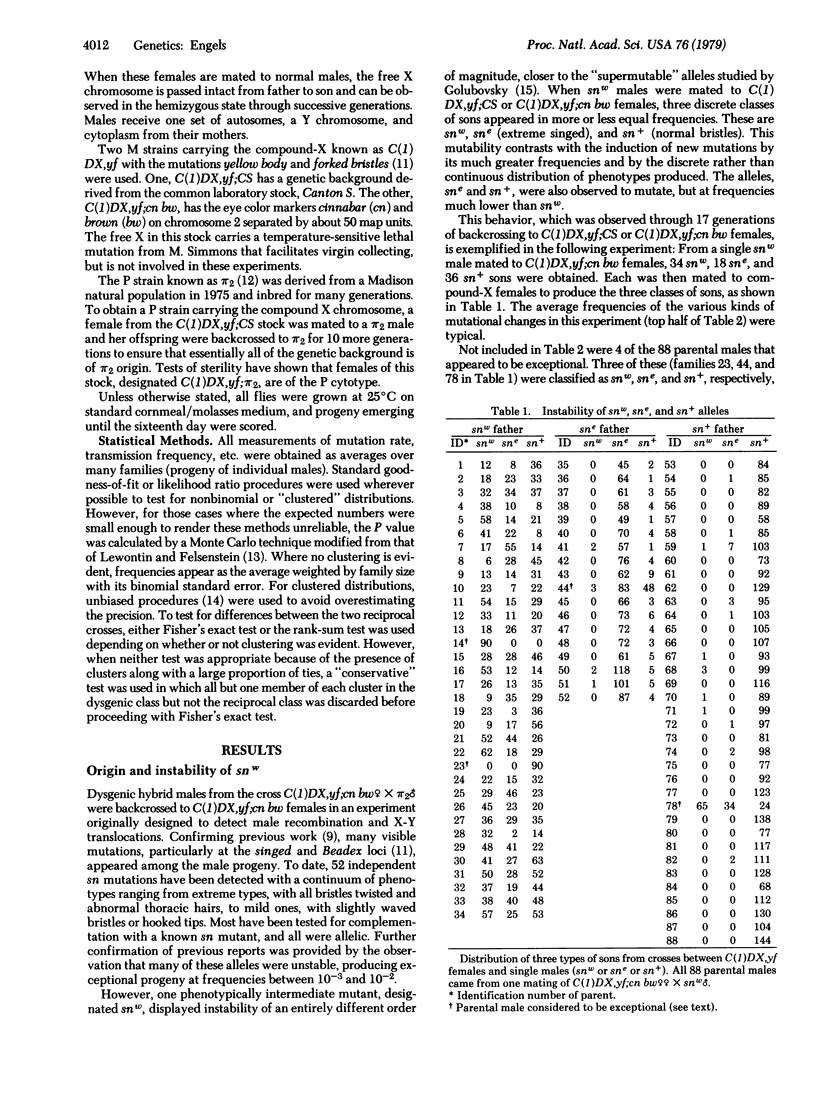
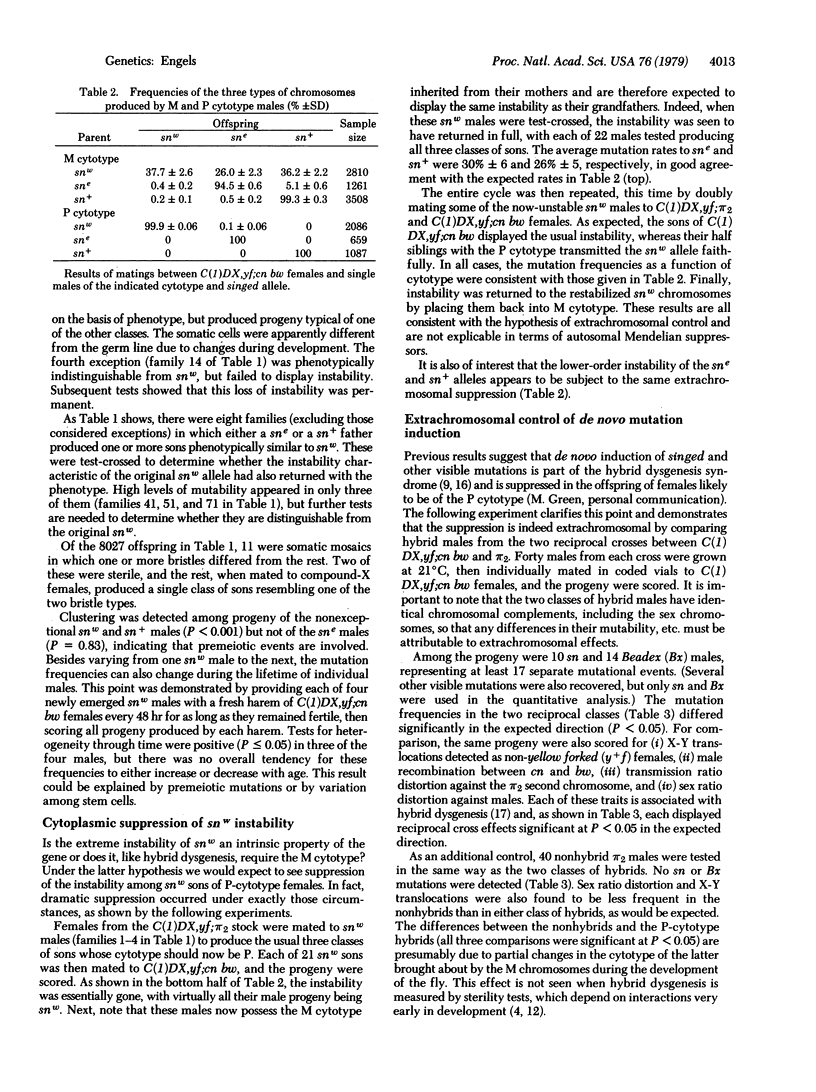
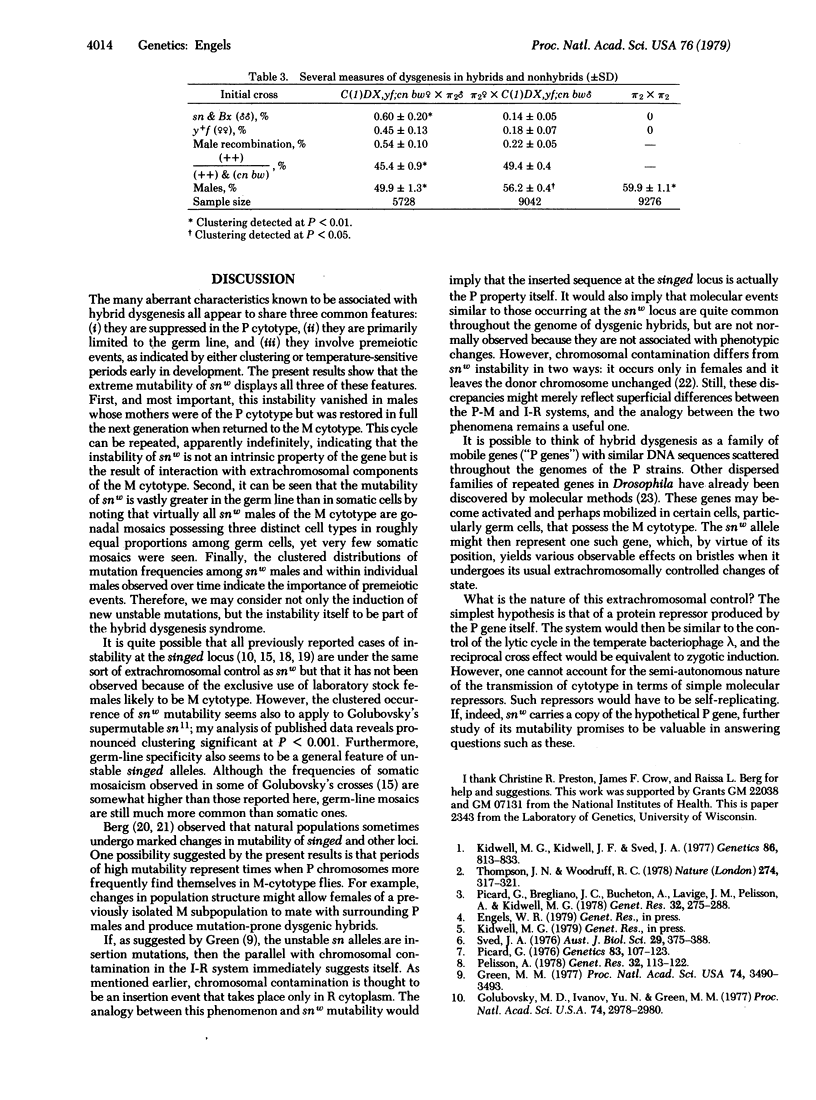
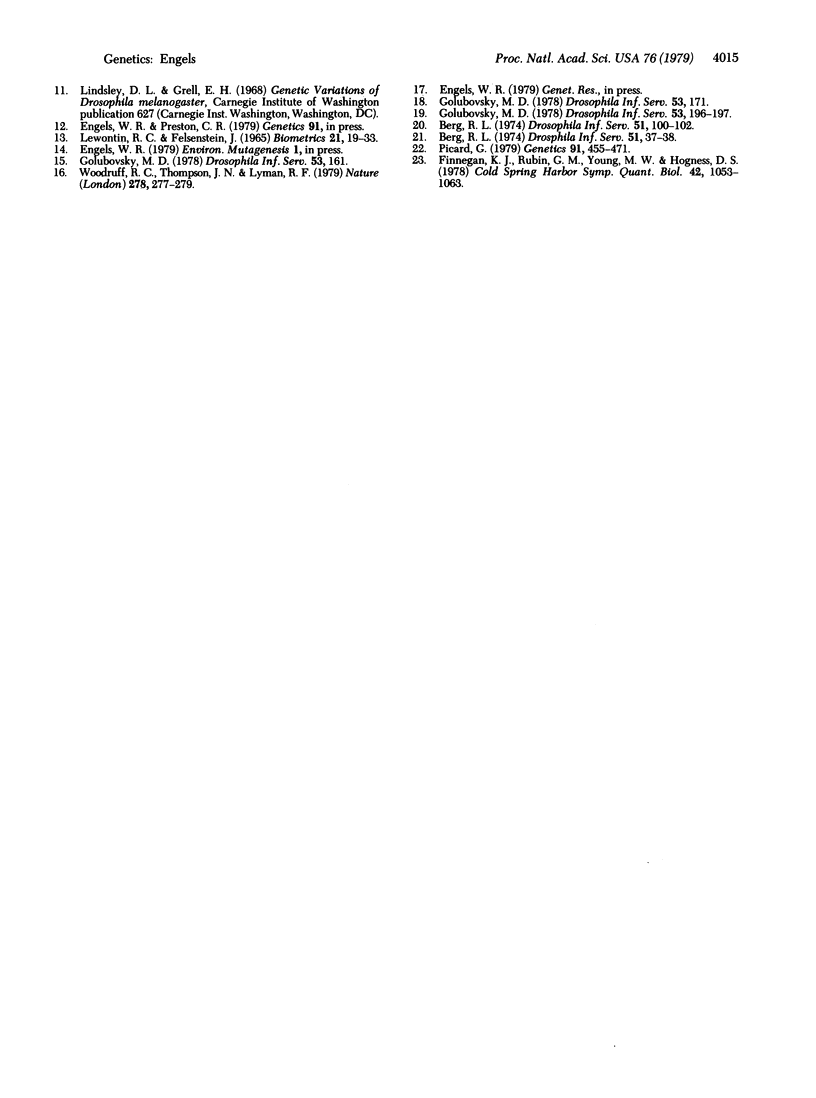
Selected References
These references are in PubMed. This may not be the complete list of references from this article.
- Finnegan D. J., Rubin G. M., Young M. W., Hogness D. S. Repeated gene families in Drosophila melanogaster. Cold Spring Harb Symp Quant Biol. 1978;42(Pt 2):1053–1063. doi: 10.1101/sqb.1978.042.01.106. [DOI] [PubMed] [Google Scholar]
- Green M. M. Genetic instability in Drosophila melanogaster: De novo induction of putative insertion mutations. Proc Natl Acad Sci U S A. 1977 Aug;74(8):3490–3493. doi: 10.1073/pnas.74.8.3490. [DOI] [PMC free article] [PubMed] [Google Scholar]
- Kidwell M. G., Kidwell J. F., Sved J. A. Hybrid Dysgenesis in DROSOPHILA MELANOGASTER: A Syndrome of Aberrant Traits Including Mutation, Sterility and Male Recombination. Genetics. 1977 Aug;86(4):813–833. doi: 10.1093/genetics/86.4.813. [DOI] [PMC free article] [PubMed] [Google Scholar]
- Picard G., Bregliano J. C., Bucheton A., Lavige J. M., Pelisson A., Kidwell M. G. Non-mendelian female sterility and hybrid dysgenesis in Drosophila melanogaster. Genet Res. 1978 Nov;32(3):275–287. doi: 10.1017/s0016672300018772. [DOI] [PubMed] [Google Scholar]
- Picard G. Non-Mendelian Female Sterility in DROSOPHILA MELANOGASTER: Principal Characteristics of Chromosomes from Inducer and Reactive Origin after Chromosomal Contamination. Genetics. 1979 Mar;91(3):455–471. doi: 10.1093/genetics/91.3.455. [DOI] [PMC free article] [PubMed] [Google Scholar]
- Picard G. Non-mendelian female sterility in Drosophila melanogaster: hereditary transmission of I factor. Genetics. 1976 May;83(1):107–123. doi: 10.1093/genetics/83.1.107. [DOI] [PMC free article] [PubMed] [Google Scholar]
- Sved J. A. Hybrid dysgenesis in Drosophila melanogaster: a possible explanation in terms of spatial organization of chromosomes. Aust J Biol Sci. 1976 Oct;29(4):375–388. doi: 10.1071/bi9760375. [DOI] [PubMed] [Google Scholar]
- Thompson J. N., Jr, Woodruff R. C. Mutator genes--pacemakers of evolution. Nature. 1978 Jul 27;274(5669):317–321. doi: 10.1038/274317a0. [DOI] [PubMed] [Google Scholar]
- Woodruff R. C., Thompson J. N., Jr, Lyman R. F. Intraspecific hybridisation and the release of mutator activity. Nature. 1979 Mar 15;278(5701):277–279. doi: 10.1038/278277a0. [DOI] [PubMed] [Google Scholar]


